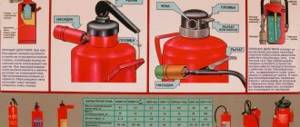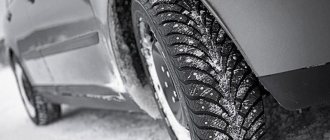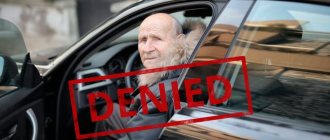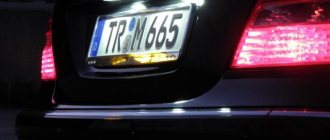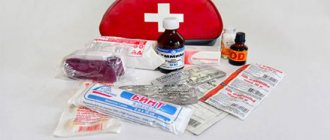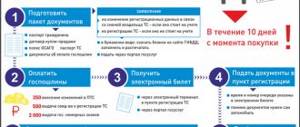What are the 4 essential items you need to carry in your car?
Everything here is simple and clear... On the one hand. After all, we are talking more often about passenger cars. And for them the required attributes are:
- first aid kit,
- fire extinguisher,
- warning triangle,
- reflective vest.
But there are also trucks, motorcycles and buses. So, the following compulsory subjects are provided for them:
Trucks under 3.5 tons are the same as for passenger cars.
Trucks over 3.5 tons and buses with a maximum weight over 5 tons :
- first aid kit,
- fire extinguisher,
- warning triangle,
- reflective vest,
- wheel chocks (at least 2 pieces).
Motorcycles with side trailers:
- first aid kit,
- warning triangle,
- reflective vest.
Motorcycles without a trailer - only a reflective vest.
This is perhaps a comprehensive list for 2021. All of these items, except for the cape vest, are provided for in paragraph 7.7 of the List of Faults (Traffic Regulations Appendix), and the reflective vest is provided for in the new paragraph 2.3.4 of the Rules.
You will also be interested in:
- Is it possible to paint a car in the colors of the police, ambulance or fire services?
- We drove under the camera at a yellow traffic light: will there be a fine and how to appeal?
- Changes in traffic rules in March 2021: new road sign 6.22 Photo and video recording
What should you carry in different categories of vehicles in 2021?
| Vehicle type/item | First aid kit | Fire extinguisher | Vest | AO sign | Wheel chocks |
| Cars, trucks up to 3.5 tons and buses up to 5 tons | Yes | Yes | Yes | Yes | No |
| Trucks over 3.5 tons and buses over 5 tons | Yes | Yes | Yes | Yes | Yes |
| Motorcycles without a trailer | Yes | No | Yes | Yes | No |
| Motorcycles with trailer | No | No | Yes | No | No |
Important changes for 2021
The maintenance procedure itself remains the same. The frequency of its completion for owners of vehicles of different categories has not changed:
- every year for passenger cars, motor vehicles, trailers and semi-trailers, trucks weighing more than 3.5 tons, educational vehicles;
- every six months for passenger taxis, route vehicles and trucks transporting dangerous goods and people;
- every two years, if 3 to 7 years have passed since the year of manufacture of a truck or passenger car weighing up to 3.5 tons, trailer or semi-trailer;
For the first three years, the vehicles mentioned in the first paragraph do not undergo maintenance and their owners can immediately take out an insurance policy.
The inspection procedure also remains the same. As a result, the owner receives a diagnostic card and goes to take out an insurance policy. The following has changed: the verification of vehicle configuration and serviceability has become more stringent. This will be discussed below.
What is the penalty for missing these items?
The measure of punishment has its own subtleties. Let’s look at how to avoid it below, first about the norms and amounts of fines.
Fine for first aid kit, fire extinguisher and triangle
For the absence of these items, the fine is 500 rubles. And in rare cases, you can get away with a warning - in practice it is issued very rarely if the driver has no fines at all, but in theory it can be if there are mitigating circumstances.
The norm of 500 rubles is established by part 1 of article 12.5 of the Code of Administrative Offenses, which provides for punishment for violating the list of faults for which the operation of a car is prohibited. That is, the above Traffic Regulations Appendix.
It is important that if you do not have a fire extinguisher, a first aid kit, or an AO sign, then only one fine can be issued, and not 3, since it is the very fact of driving that is punished in the presence of conditions prohibiting driving without these items listed in clause 7.7 List of faults.
Another subtlety of the penalty is for the absence of a triangle. If you do not have it in case of an accident, then you are subject to qualification under another administrative norm - part 1 of Article 12.27 for failure to display the AO sign in the event of an accident with a penalty of 1000 rubles. And this is legal. That is, in fact, in this case you will already receive 2 fines.
Penalty for reflective vest
There is no one for 2021. The point here is that the clause in the Traffic Rules obliging you to carry it with you and wear it under certain circumstances was introduced quite recently. And they haven’t yet come up with a fine for his absence.
Consequently, any attempts by a traffic police officer to charge you for not wearing a cape vest are unlawful - there is no article in the Administrative Code that would punish for this.
Otherwise, read the article and its part of the Code of Administrative Offences, indicated in the resolution on the violation - it must be there; without specifying the norm, the resolution is invalid. This article will not make reference to clause 2.3.4 of the traffic rules – neither specific nor general (indirect). List of fines for not having required items in the car
| Item | Fine | Article of the Administrative Code |
| For the first aid kit | 500 rubles | 12.5, part 1 |
| For the fire extinguisher | 500 rubles | 12.5, part 1 |
| For the warning triangle | 500 rubles and another 1000 rubles in case of an accident | 12.5, part 1, 12.27, part 1 |
| For a reflective vest | No fine | – |
How to avoid a fine for a first aid kit, fire extinguisher and AO sign?
Simple enough. Everything that you are required to present to the traffic police inspector for inspection is specified in paragraph 2.1.1 of the traffic rules. And there are no specified objects there. And a traffic police officer can independently check their presence only in 2 cases:
- as part of a vehicle inspection, which you can refuse or if you yourself declare that you do not have them,
- within the framework of an inspection of a vehicle, for which compelling reasons are needed, and suspicions (unmotivated, however - the refusal to provide them for inspection is not a reason to suspect their absence) of the inspector are not such grounds.
That is, there is an obligation to have them, but not to present them for verification. And there can be a fine only if you yourself admit that you do not have a fire extinguisher, first aid kit or warning triangle in your car.
Something else useful for you:
- Is it possible to order and legally drive without a fine with license plates without the Russian flag?
- Is it necessary to comply with reduced traffic signs?
- New sign “child passengers” in cars according to traffic rules – when will it come into force?
If the fire extinguisher or first aid kit is expired
An interesting nuance - can a fine be issued if you actually have a first aid kit and a fire extinguisher, but their expiration date has expired? This nuance is actually more subtle than it might seem.
On the one hand, clause 7.7 of the traffic rules clearly states that operation of the vehicle is prohibited if this fire extinguisher, first aid kit or triangle is missing That is, a fine should be imposed only for their absence, even if they are overdue.
But it's not that simple! The judge or official reviewing the violation may base his conclusion on the objectivity of the driver’s actions - especially if he was aware that he was driving with expired attributes that must be in the car. The obsolescence of these objects may constitute an offense, since it does not contribute to road safety, just as if they were completely absent.
Requirements for passing a technical inspection in 2021
The maintenance procedure is regulated by RF PP No. 1008 dated 05.12.2011 “On carrying out technical inspection of vehicles” (hereinafter referred to as PP No. 1008). The main components and assemblies that are checked by an expert are divided into 7 groups:
- braking systems. An expert checks the serviceability, safety and efficiency of its operation;
- steering. Diagnostics of maneuverability, play, power steering and suspension are carried out;
- external lighting devices. Their presence, adjustment, functioning, integrity, brightness and absence of contamination are checked;
- windshield wipers and washers. Their presence, performance, and fluid supply are assessed;
- tires and wheels. The integrity of the rubber, tread height, absence of cracks, presence of all wheel fastening elements, etc. are checked;
- engine and its systems. The level of environmental friendliness of the motor, absence of leaks, correct placement, and noise level are checked.
- additional units. Checking locks, clutch, seat belts, hazard lights, first aid kit, fire extinguisher.
As of February 12, 2018, changes regarding the requirements for vehicle inspection came into force. The basic requirements for headlights and lenses, studded tires, gas equipment, windshield wipers, power steering, oil leakage, first aid kit, fire extinguisher, etc. have been updated and expanded. Let's consider each of the new requirements of the operational inspection cards.
Headlights
Appendix 1 of PP No. 1008 clearly outlines the requirements for vehicle lighting. Innovations regarding reflective markings and headlights:
- peeling and marking defects are not acceptable;
- headlights must be selected in size, color and shape.
Headlight lenses
As for this point, previously only the absence and defects of the car’s lighting devices were not allowed. Now the basic requirements have expanded:
- Headlight lenses cannot be dirty. You need to take care of their cleansing even before undergoing maintenance;
- Additional parts cannot be installed on the headlights, and film gluing and tinting are also prohibited.
Windscreen wipers
Until 2021, the function and quantity of windshield wipers and washers were not tested. It was enough to have one such device - only their presence mattered.
In 2021, all vehicle windshield wipers and windshield washers are subject to technical inspection. If at least one of the devices provided with the vehicle is not installed or is not operational, the owner will not receive a positive conclusion about the passage of maintenance.
Studded tires
Previously, the following requirements were introduced for studded tires:
- It is not allowed to install tires of different sizes and designs, with different tread patterns, both frost-resistant and non-frost-resistant, used and new.
This point has been retained, but the following has been added to the above requirements:
- Studded tires, if used, are installed on all wheels of the car.
Thus, if the vehicle is equipped with different tires, successful diagnostics is impossible.
Steering gear and power steering
No damage or malfunctions in the steering are allowed. This requirement existed until 2021. At this moment, the performance of the amplifier is also being checked. If such a unit is provided for by the design, but at the time of maintenance it is not functioning, this is considered a violation. Leaks are also not allowed in the power steering system.
On a note! Regardless of the mechanism of operation of the amplifier, it must be in good working order. This applies to hydraulic boosters, electric boosters, combined and other steering control devices.
HBO
For vehicles with gas cylinders, the inspection rules were written directly into clause 36 of PP No. 1008: there should be no leaks in the power system, passport data and the period for inspection of the installation are indicated on the external surface.
After the innovations of 2021, the paragraph was shortened - now it contains a reference to Appendix No. 8 to TR CU 018/2011, which describes the requirements for cars with gas installations. Here is their summary:
- The serial number and LPG or CNG mark are indicated on the cylinder
- the cylinder must have a manufacturer's passport;
- the installation of gas equipment must be inspected and appropriate inspections carried out periodically;
- the design of the gas equipment cannot be changed;
- It is impossible to operate gas equipment when: the integrity of the installation is compromised, a gas leak is detected, or the inspection period has expired.
Requirements for leakage of oils and working fluid
The procedure for checking oil and liquid leaks has also become more stringent. Previously, a little drip was acceptable, but now any leakage is not acceptable.
The phrase “more than 20 drops per minute” is excluded from paragraph 65 of PP No. 1008, so if there is even the slightest leak, you will not be able to pass the inspection.
Fire extinguisher, sign and first aid kit
A warning triangle is mandatory. The exceptions are categories O, L1 – L4. Buses must be equipped with 3 first aid kits, other vehicles - with one. All medications must be suitable for use - there should be no expired medications in the first aid kit during the technical inspection.
Previously, at least two fire extinguishers were provided in the bus interior, but now passenger cars are equipped with one 1-liter fire extinguisher, and trucks and buses are equipped with one two-liter fire extinguisher. Vehicles with two floors must have a fire extinguisher on each floor.
Good to know! The warning triangle must have a fluorescent stripe. It is recommended to choose a plastic sign, as it is more durable and more practical.
You will learn more about which car fire extinguisher is needed for technical inspection below.
Design changes
Replacing light bulbs, tuning, tinting windows and other additional installations are considered changes to the design of the car. Such changes are not always permissible and may violate the established requirements specified in PP No. 1008.
When additional structural elements not provided for by the manufacturer are installed on a vehicle, this must be recorded in the STS. Otherwise, you will not be able to pass the inspection.
Other vehicle inspection requirements in 2021
Along with the above changes, 14 additional points were added to Appendix No. 1, which provide references to the list of requirements for vehicles of different categories and purposes. The information is quite voluminous, and you can read it in detail via the link (paragraphs 68-82).
The diagnostic card, which is issued following a vehicle inspection, has also acquired a new look in accordance with the above changes. The duration of a bus check has also increased, and additions have been made to regulate temporary standards for checking specialized vehicles and trucks transporting dangerous goods.
What are the requirements for a fire extinguisher?
The requirements for a fire extinguisher are dictated only by the Technical Regulations on the Safety of Wheeled Vehicles, so it has no direct responsibilities for the driver.
Thus, the regulations provide the following rules:
- Each car and motorcycle must have a place for its installation (clause 1.15.6.3): for passenger cars - 1 fire extinguisher with a volume of 2 liters,
- for trucks over 3.5 tons - 2 fire extinguishers: one - 2 liters, the second - 5 liters,
- for buses - 2 fire extinguishers, one of which should be located near the driver’s seat.
Fire extinguisher: price and what should it be?
Any vehicle is considered a fire hazard , so there should always be a fire extinguisher in it. The presence of a fire extinguisher is also checked during technical inspection.
What type of fire extinguisher should it be?
The choice of all kinds of fire extinguishers is now very large. The machine can contain both powder and carbon dioxide. But it is very important that they meet certain requirements , namely:
compliance with GOST NPB 155-2002 and R51057-2001;- required volume: 2 liters for passenger cars and 5 liters for trucks;
- the weight of fire extinguishers is also very important: in a passenger car it should weigh at least 2 kg, and in a truck – at least 5 kg;
- Also, this fire safety device must have the necessary markings containing the manufacturer’s address and instructions for use;
- The expiration date of the fire extinguisher must be valid.
Powder and carbon dioxide products are suitable for a car , but water or foam products are completely unsuitable in this case.
Advice! The most popular automobile fire extinguisher at the moment is the OP-2 model, powder type. The main advantage of this fire extinguisher is that it meets all maintenance requirements and is low cost.
Best before date
The shelf life of this device is divided into real and nominal. The rated expiration date is indicated on the label and represents the maximum time for which the fire extinguisher can be used.
And the real life is the actual life of the possible operation of the device, which depends on storage conditions and compliance with the rules of use. In order for these two expiration dates to be as consistent as possible with each other, you need to show the fire extinguisher to specialists every year .
The nominal shelf life of powder automobile fire extinguishers according to GOST is 2 years, and carbon dioxide – 5 years. After this time, the device must be recharged.
Price
When purchasing a fire extinguisher, you do not need to save money by buying smaller models, since the size of such a device must correspond to the dimensions of the machine. The cost of carbon dioxide devices varies from 600 to 2000 rubles. And powder type fire extinguishers will cost 500 – 1200 rubles.
What are the requirements for a first aid kit?
A first aid kit has almost the same placement requirements as a fire extinguisher: a place to install it in the car. But there is no requirement for accessibility from the driver's seat. It must also not be expired.
The composition of the first aid kit, according to the new Order of the Ministry of Health No. 1080N, should be as follows:
- tourniquet to stop bleeding,
- sterile and non-sterile bandages of various widths,
- sterile dressing bag,
- gauze napkins,
- adhesive plasters of various widths, including rolled ones,
- artificial respiration system,
- medical scissors,
- medical gloves,
- instructions for using all these items.
We have a special article about the required contents of a first aid kit under the new law.
First aid kit: composition, expiration date and why is it needed?
its presence in the vehicle can still during a technical inspection.
This can be explained by the fact that the technical inspection of the car itself is carried out for the safety of the motorist, and having a first aid kit with you is also necessary for this very purpose.
Compound
A car first aid kit should contain those medications and medical supplies that you should have with you in the car while driving. Requirements for the configuration of a first aid kit became softer in 2010.
Before this, it was necessary to buy and be sure to carry painkillers, cardiac and disinfectants, as well as medications for diarrhea and many other drugs. Nowadays, travel first aid kits should contain bandages.
Here is a complete list of necessary components according to Order of the Ministry of Health No. 697n on amendments to Order No. 325:
- tourniquet to stop bleeding;
- non-sterile bandages, the width of which is 5 cm and the length of 5 m - 2 pieces;
- non-sterile bandages, the width of which is 9 cm and the length of 5 m - 2 pieces;
non-sterile bandage, the width of which is 14 cm and the length of 7 m;- sterile bandages, the width of which is 7 cm and the length of 5 m - 2 pieces;
- sterile bandages, the width of which is 5 cm and the length of 5 m - 2 pieces;
- sterile bandage, width 14 cm and length 7 m;
- sterile dressing bag;
- medical sterile wipes;
- bactericidal patches in sizes 4x10 (2 pieces) and 1.9x7.2 (10 pieces);
- roll-type plaster size 1x250;
- device “Mouth-Device-Mouth”;
- scissors;
- medical gloves.
Why is it needed?
A first aid kit in the car is necessary so that after an accident you can provide first aid to the victims before the ambulance arrives.
During a technical inspection, a first aid kit is needed so that specialists can make sure that the car has everything to ensure the safety of the driver and passengers as much as possible.
Best before date
Previously, until 2010, the first aid kit included many medications. That is why the first aid kit had a shorter shelf life. But since now its components are only dressing materials, this figure has increased significantly.
Attention! For 2021, the shelf life of a first aid kit is 4.5 years.
Price
The new version of the travel first aid kit has changed not only the expiration date, but also the cost of such an acquisition. Since dressing preparations are not particularly expensive, the price of a first aid kit has decreased .
For 2021 it is approximately 350 rubles. There are packages whose price is even less than 300 rubles, but you shouldn’t take them, since the quality of the dressing materials collected there leaves much to be desired.
A good example of a motorist's first aid kit:
What are the requirements for a warning triangle?
This attribute in 2021 is already regulated by a special GOST - R 41.27-2001 (UNECE Rules No. 27). It is very large, we will give only the main points:
- the triangle must have an approval mark (quality mark) of the following type:
- it must have a cover, and its edges must not be sharp,
- length of each side – 50 cm (+/- 5 cm),
- height from the road to the bottom edge when installed is no more than 30 cm,
- The color of the reflectors is only red.
What are the requirements for a reflective vest?
The cape is also regulated by GOST under GOST number 12.4.281-2014. In particular, it provides the following basic requirements:
- reflector strip width is at least 5 cm,
- it can be either a vest or a jacket,
- they can have 2 stripes with reflective material.
The correct vest according to GOST
You can read all the requirements in our special article on reflective vests.
